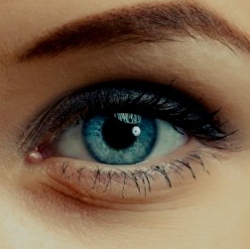
Physicists have pinned down precisely how pipe-shaped cells in our retina filter the incoming colours. These cells, which sit in front of thoes that sense light, play a big role in our colour vision. They funnel crucial red and green light into cone cells, leaving blue to spill over and be sensed by rod cells – which are responsible for our night vision.
Key to this process, researchers now say, is the exact shape of the pipes. The long, thin cells are known as "Muller glia" and they were originally thought to play more of a supporting role in the retina. They clear debris, store energy and generally keep the conditions right for other cells, like the rods and cones behind them – to turn light into electrical signals for the brain.
But a study published last year confirmed the idea, proposed in earlier simulations, that Muller cells also function rather like optical fibres. And more than just piping light to the back of the retina, where the rods and cones sit, they selectively send red and green light – the most important for human colour vision – to the cone cells, which handle colour.
Meanwhile, they leave 85% of blue light to spill over and reach nearby rod cells, which specialise in those wavelengths and give us the mostly black-and-white vision that gets us by in dim conditions.
